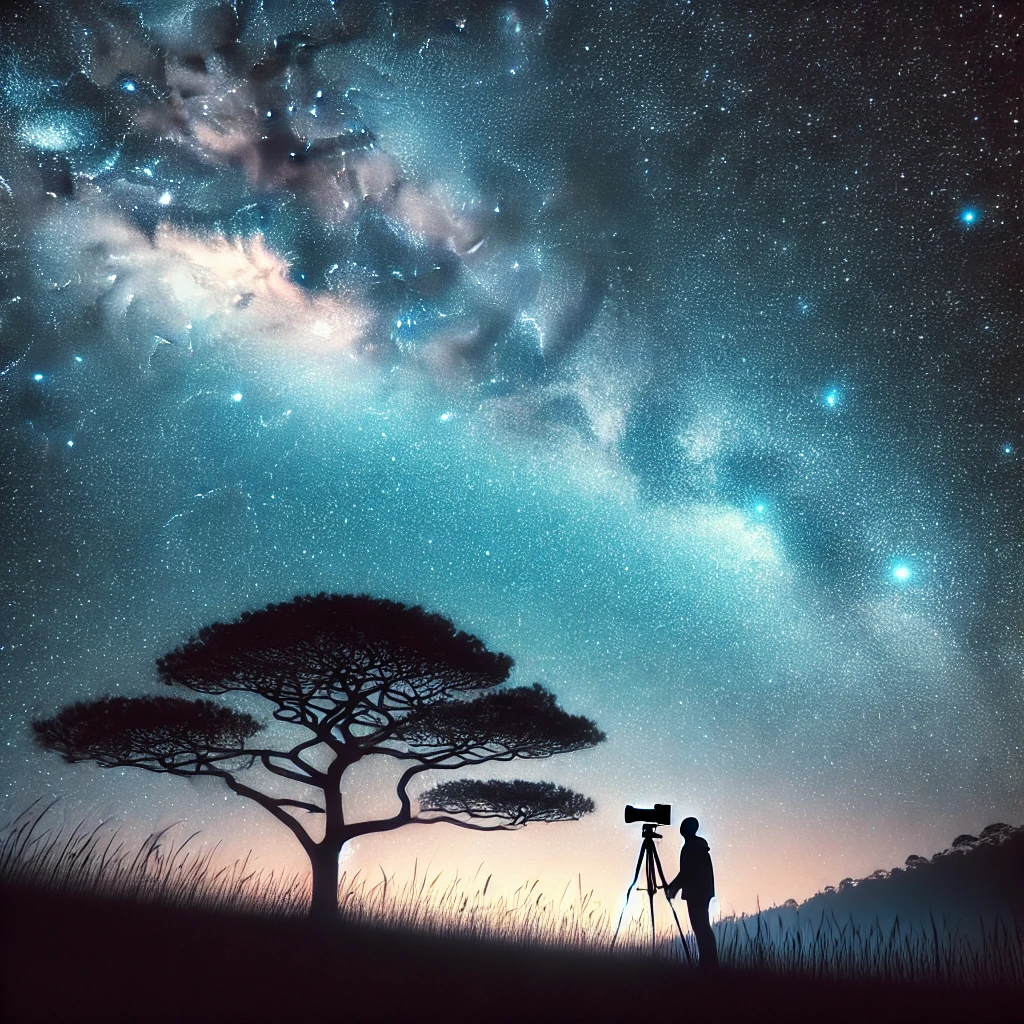The night sky has captivated human imagination for centuries, and with modern tools, you can capture its beauty through astrophotography. Whether it’s a star-filled sky, a glowing moon, or distant galaxies, night sky photography offers a rewarding blend of art and science. Here’s how you can start exploring this mesmerizing hobby.

Why Try Night Sky Photography?
Astrophotography is not just about taking pictures—it’s about connecting with the universe and appreciating its vastness. Here’s why it’s worth your time:
- Unveiling the Invisible Cameras can capture details in the night sky that the human eye can’t see, like faint stars or the Milky Way.
- Creative Expression Play with compositions and light to create stunning visuals that reflect your perspective of the cosmos.
- Relaxing and Rewarding Spending time under the stars fosters mindfulness and offers a sense of wonder.
Tools You Need to Get Started
You don’t need a lot of equipment to begin your astrophotography journey. Here’s what you’ll need:
- Camera A DSLR or mirrorless camera with manual settings works best. Smartphones with night mode can also be surprisingly effective.
- Tripod Stability is key for long-exposure shots. A sturdy tripod will help you capture sharp images.
- Lens A wide-angle lens with a large aperture (e.g., f/2.8) is ideal for capturing more of the night sky.
- Remote Shutter or Timer Avoid camera shake by using a remote shutter release or your camera’s timer function.
Tips for Stunning Night Sky Photos
- Find a Dark Location Light pollution can obscure the stars. Head to a rural area or a designated dark-sky park for the best results.
- Check the Weather Clear skies are essential. Use weather apps or astronomy forecasts to plan your shoot.
- Use Manual Settings Experiment with long exposures (20-30 seconds), a low f-stop, and a high ISO to capture more light.
- Focus Manually Autofocus struggles in the dark. Use manual focus and adjust until the stars appear sharp.
- Experiment with Compositions Include foreground elements like trees, mountains, or water to add depth and interest to your photos.
Final Thoughts
Astrophotography is a magical way to connect with the universe and preserve its beauty. With a bit of practice and patience, you can capture breathtaking images of the night sky that inspire awe and wonder. So grab your camera, head outdoors, and let the cosmos be your canvas.